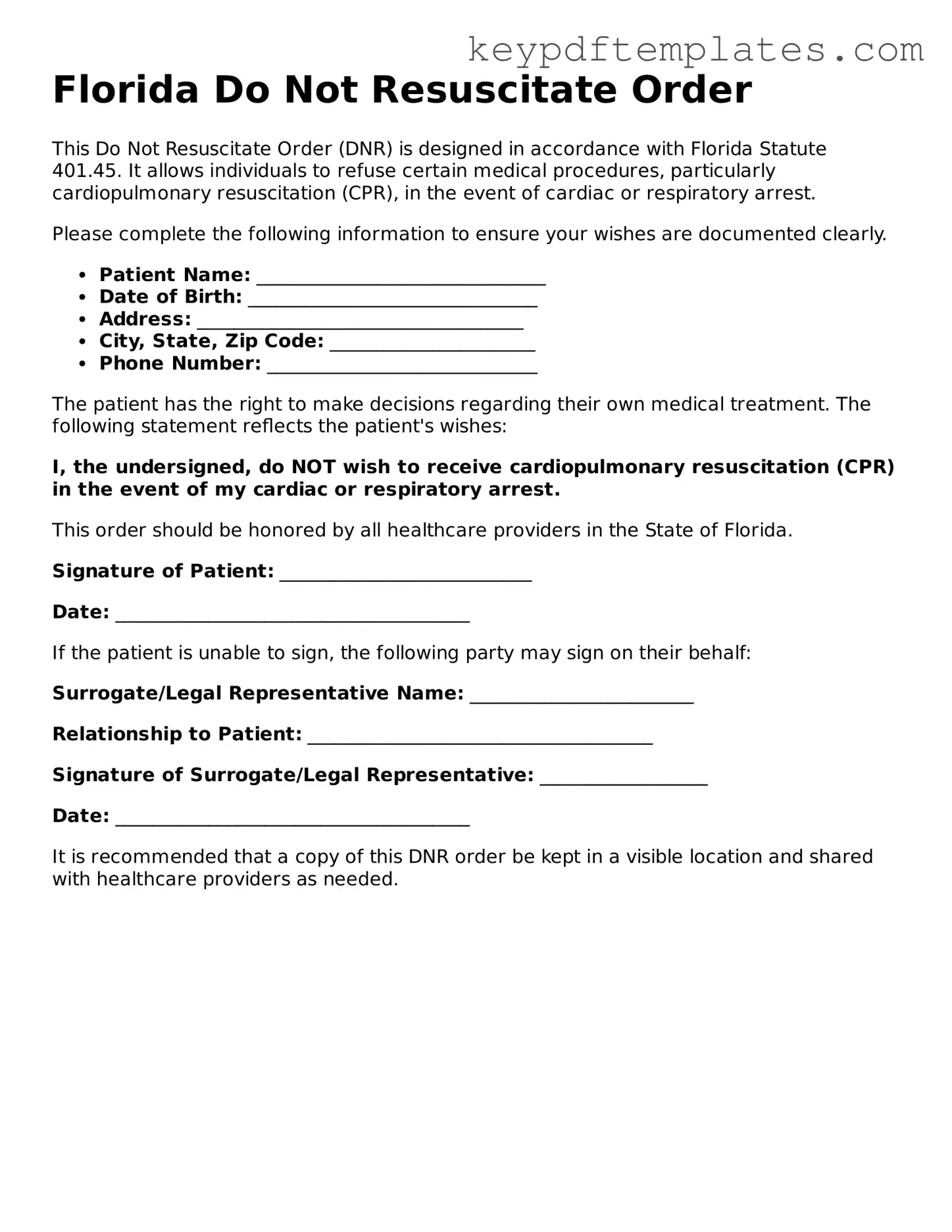Legal Do Not Resuscitate Order Document for the State of Florida
A Florida Do Not Resuscitate Order (DNRO) form is a legal document that allows individuals to refuse cardiopulmonary resuscitation (CPR) in the event of cardiac or respiratory arrest. This form is designed to ensure that a person's wishes regarding end-of-life care are respected by medical professionals. Understanding how to properly complete and utilize this form is essential for those who wish to make informed decisions about their healthcare preferences.
Modify Document Online
